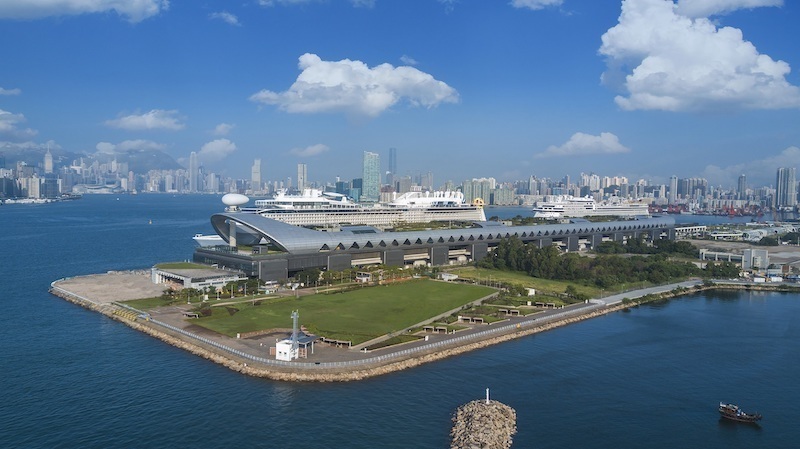A preliminary study conducted by Bureau Veritas Solutions Marine & Offshore has indicated that it should be feasible to safely conduct ship-to-ship LNG bunkering simultaneously with passenger operations at Hong Kong’s Kai Tak Cruise Terminal. This is according to industry standards for safe operations adopted in other jurisdictions.
According to a press release, the study made use of industry gas dispersal models and representative scenarios based on LNG-fueled cruise ships and LNG-bunkering vessels currently in use and under construction.
Worldwide Cruise Terminals (WCT), which operates the Kai Tak Cruise Terminal, said that it welcomes the results of this early study.
“We are proud to support the Hong Kong government’s Clean Air 2035 and Climate Action 2050 Plans, which indicate that the HKSAR government intends to pursue LNG bunkering for ocean-going vessels as a means to greatly reduce air pollution and greenhouse gas emissions. With this study, we establish that the Kai Tak Cruise Terminal is a suitable facility for ship-to-ship LNG bunkering to take place, simultaneously with standard passenger operations, for the rapidly growing number of LNG-powered cruise ships. Many leading ports have commenced LNG bunkering, and we look forward to joining their ranks. We stand by to assist regulators to craft detailed policies and procedures for an earlier commencement of the use of this fuel,” said WCT’s Managing Director Jeff Bent.
Huw Coffin, the general manager for Bureau Veritas Solutions Marine & Offshore in the North Asia Zone and lead researcher for the study, added that the LNG industry has an “excellent safety record, which thankfully is being replicated across the maritime industry with the increasing use of natural gas as a marine fuel.”
“Switching to LNG from traditional fuel oil has the potential to reduce GHG emissions by around 20 percent, as well as the added benefit of reducing NOx emissions by up to 80 percent and being almost SOx and particulate matter free,” Coffin said.
“LNG continues to be the most viable alternative fuel for the foreseeable future which is reflected in the newbuilding order book with 30 percent of the tonnage in GT terms due to be installed with LNG capable engines. This includes 29 cruise ships equating to circa 50 percent of the cruise ship capacity on order. The introduction of LNG bunkering in Hong Kong would support Hong Kong’s Clean Air Plan and also increase the attractiveness of the port by expanding bunkering services to the rapidly increasing LNG-fueled fleet,” he added.
Bent noted that the next steps will include discussing the results of the study with relevant government departments and industry participants to determine the best path forward for a timely realization of this aspect of Hong Kong’s clean air and carbon neutrality goals.




